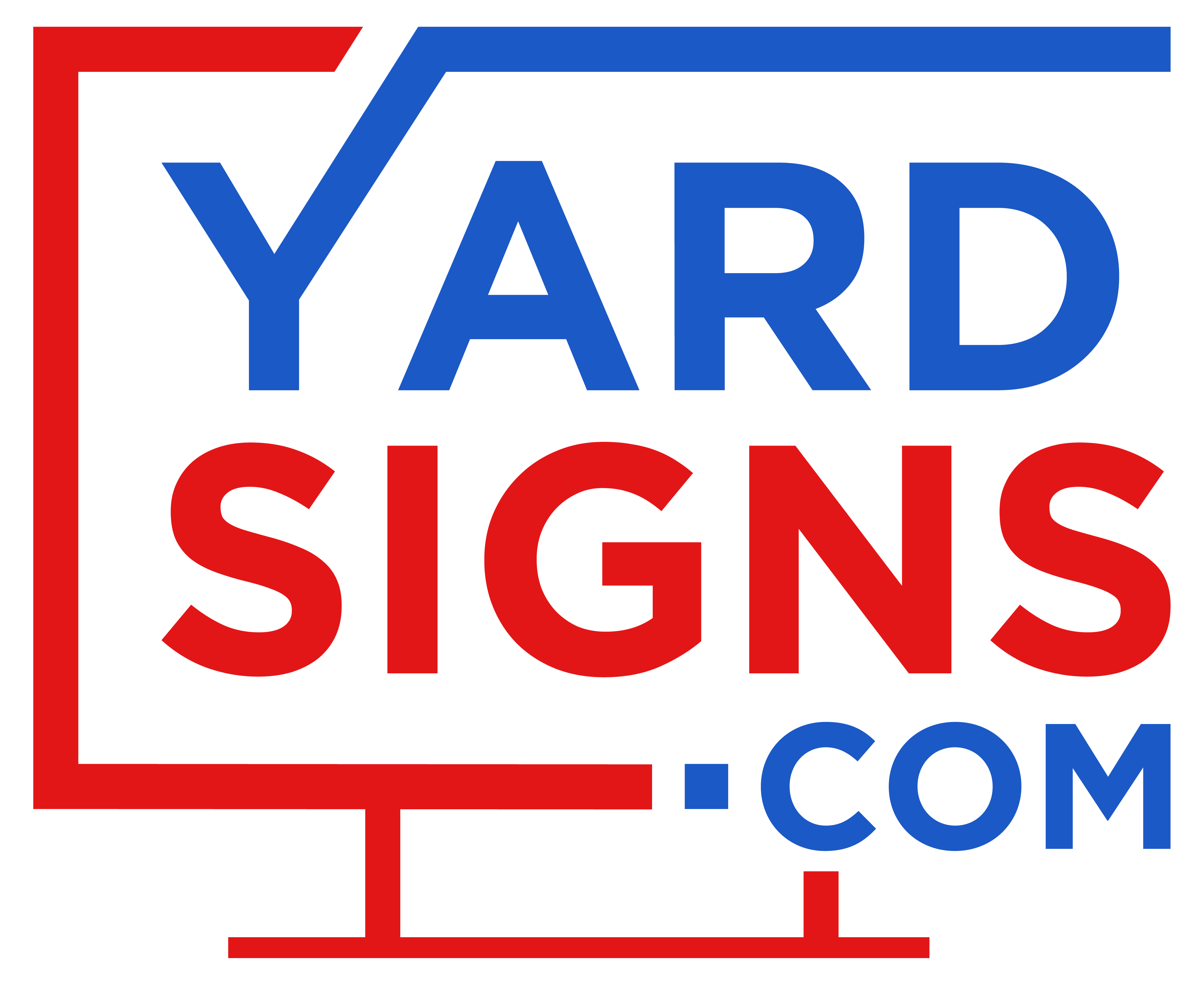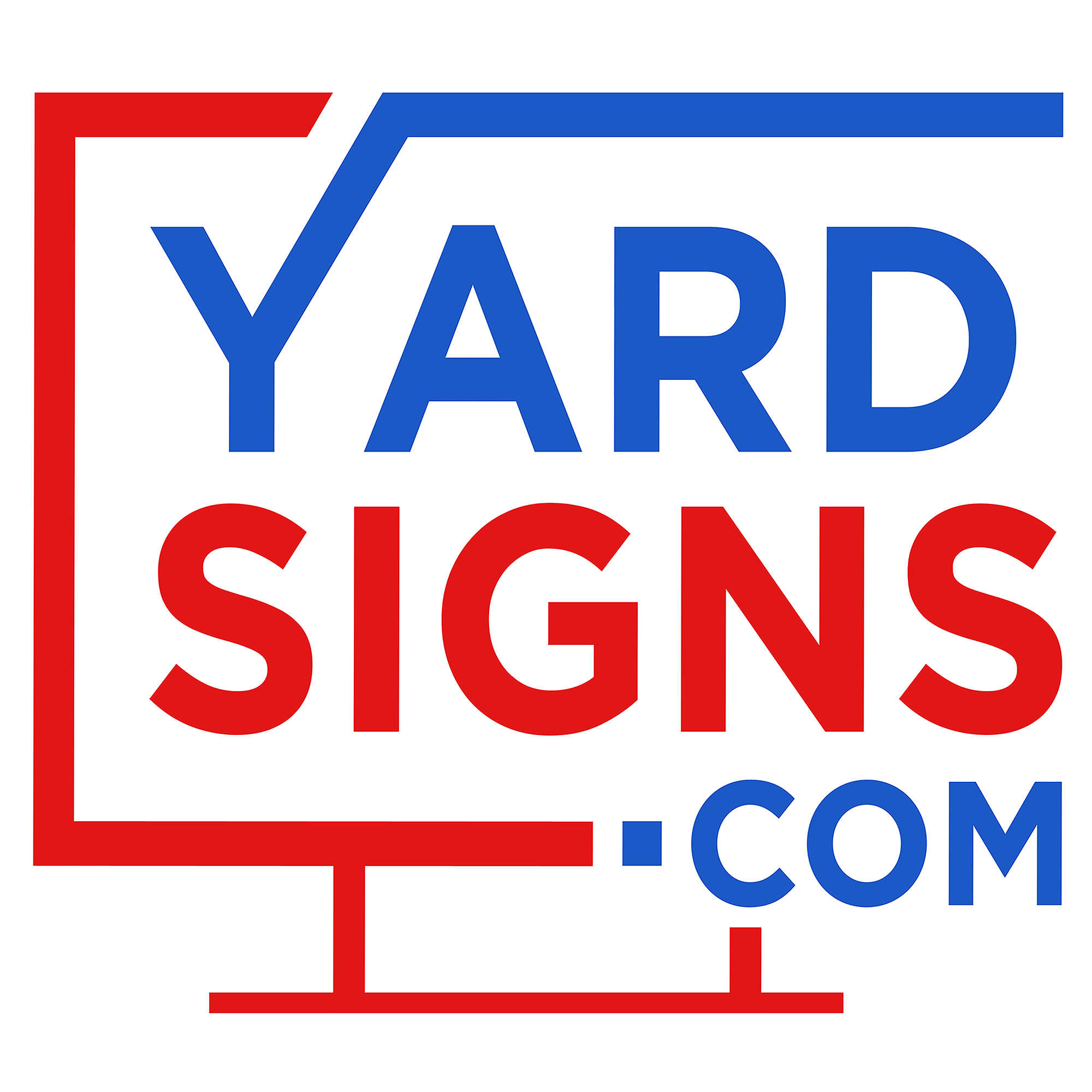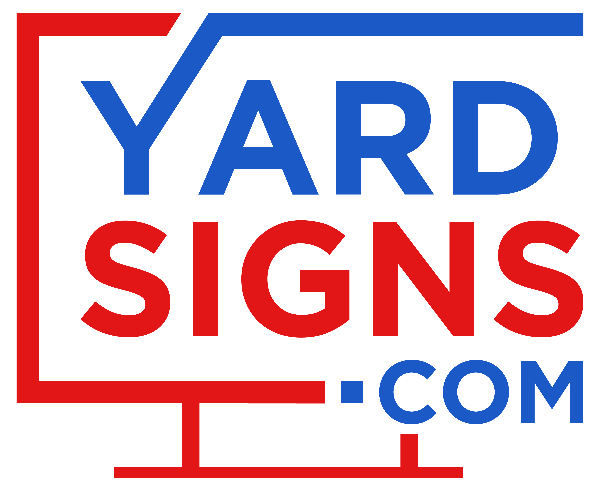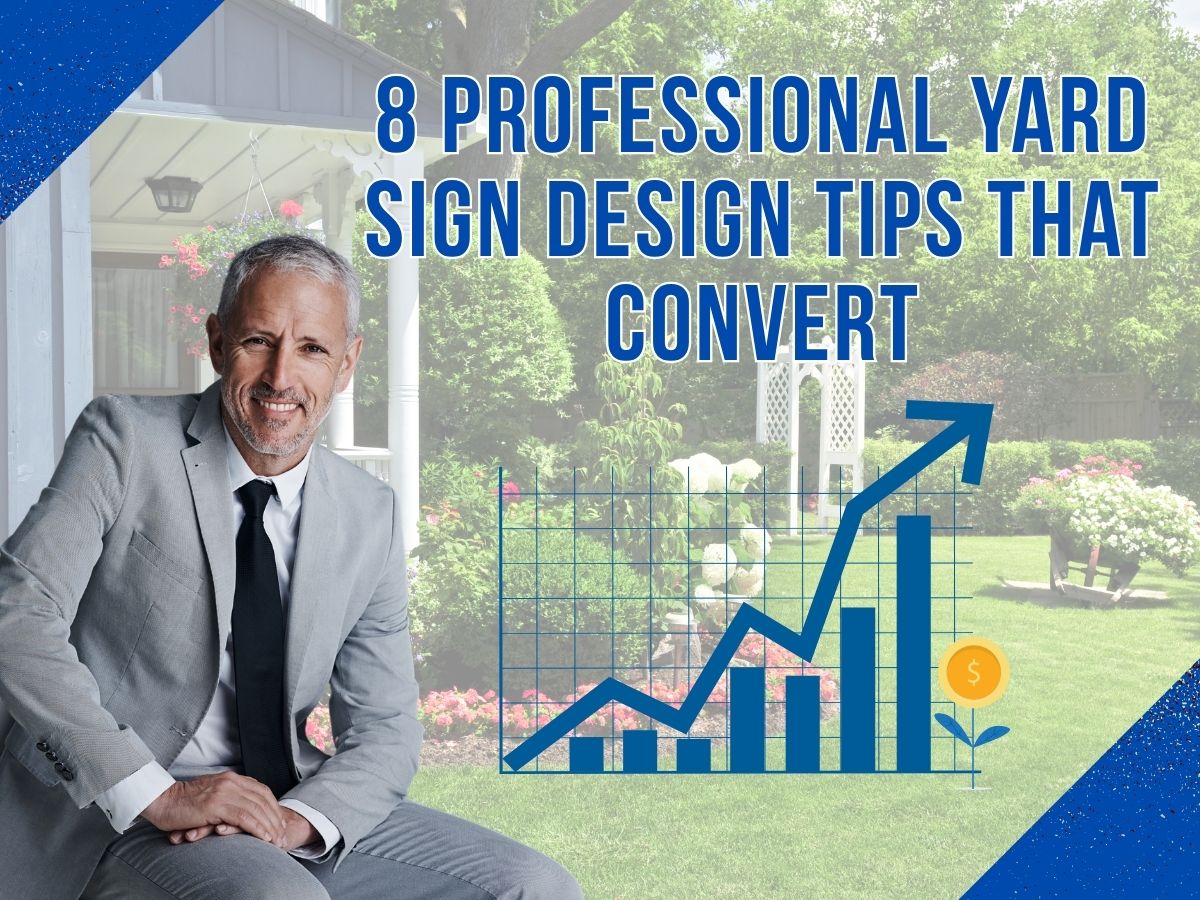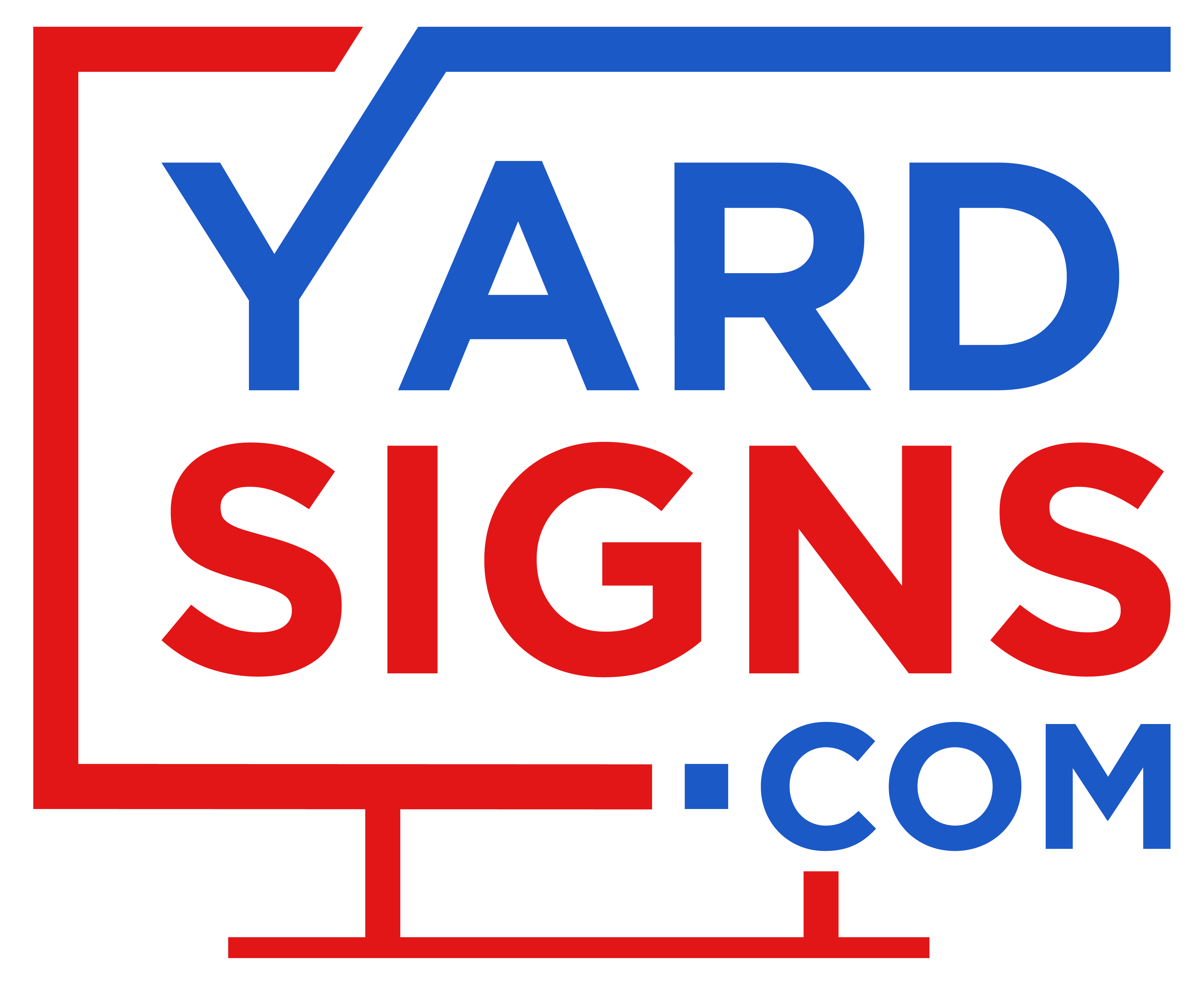A yard sign is more than a piece of printed material on a lawn. When designed correctly, it communicates a message clearly and helps people take action, whether that's calling a number, visiting a website, or attending an event.
Design plays a key role in how well a yard sign performs. Placement, color, font, and wording all affect whether someone notices a sign and remembers it later. A sign that is hard to read or confusing to look at can be ignored completely.
This article explores eight design tips that improve sign visibility and help convert views into real outcomes. It is focused on people asking, "How to make an effective yard sign?" for the first time.
Why A Well-Designed Yard Sign Matters?

An effective yard sign uses layout, contrast, and copy to deliver a message that is easy to notice and understand in a short amount of time. Most people see yard signs while driving or walking, so the message must be recognizable in three seconds or less.
Design, readability, and placement directly affect conversion rates. A poorly designed sign can waste money by failing to attract attention or communicate its message. In contrast, a well-designed sign can increase engagement and drive more responses, especially for service businesses and real estate listings.
A sign is considered effective when it:
- Is easy to read from a distance
- Uses high-contrast colors
- Is placed where target audiences can see it
- Focuses on a single, clear message
Choosing The Right Materials for Yard Signs
The material you choose for your yard sign affects how long it lasts outdoors and how it looks in different weather conditions. Some materials work better for temporary signs, while others are designed for long-term use.
Corrugated plastic is lightweight, waterproof, and affordable. This fluted polypropylene material works well for temporary signs like event announcements or political campaigns. It typically lasts 6-24 months depending on weather exposure and comes in 4mm or 6mm thickness options. Thicker versions resist bending in wind and rain.
Aluminum signs offer more durability and a professional appearance. They resist rust, corrosion, and fading, making them suitable for long-term outdoor use. These signs can last 3-5 years in normal conditions and maintain their appearance in high-sun or high-moisture environments. Some aluminum signs include reflective coatings for better visibility at night.
Weatherproof coatings protect both plastic and metal signs from sun damage and moisture. UV lamination prevents fading, while waterproof films keep ink from washing away in rain. These coatings extend sign life and help maintain a newer appearance longer.
|
Material |
Durability |
Cost |
Best For |
|
Corrugated Plastic |
6-24 months |
$ |
Temporary signs, events |
|
Aluminum |
3-5 years |
$$$ |
Long-term business signs |
|
Wood |
6-12 months |
$$ |
Rustic displays |
Perfecting Your Color and Font Contrast
Color contrast determines how easily people can read your yard sign, especially from a distance or while moving. High-contrast combinations make text stand out from the background, while low-contrast combinations reduce readability.
The environment affects how colors appear on outdoor signs. Bright sunlight can wash out pale colors, while shadows can make dark colors harder to see. Signs placed near grass or trees may blend in if the colors are too similar to the surroundings.
The most effective color combinations for yard signs include:


- Black text on white background
- White text on dark blue background
- Yellow text on black background
- Black text on yellow background
- Red text on white background
Different colors can also trigger different reactions. Red often signals urgency, blue suggests trustworthiness, and yellow draws quick attention because it's highly visible from a distance.
Essential Tips for Readable Typography
Typography affects whether someone can quickly read and understand your yard sign. Since most yard signs are viewed for just a few seconds, choosing the right font size and style is crucial.
Font size affects viewing distance. A simple formula can help determine the right size: for every inch of letter height, the text is readable from about 10 feet away. This means 3-inch letters can be read from 30 feet, which is about the distance of a passing car.
Sans-serif fonts work best for yard signs. These fonts don't have decorative strokes at the ends of letters, making them easier to read quickly. Good options include Arial, Helvetica, and Futura.
Bold fonts increase visibility. Using bold weight for important information like phone numbers or business names helps these elements stand out. Regular weight can be used for secondary information.
Letter spacing improves readability. Letters that are too close together become harder to distinguish, especially from a distance. Slightly increased spacing between letters and lines makes text more legible.
Strategic Placement and Display Tips

Where you place your yard sign determines how many people see it and whether they can read it fully. Signs at busy intersections reach more people, but viewers have less time to read the message.
Eye-level placement improves visibility. Signs positioned about 4-5 feet from the ground fall within the average line of sight for both drivers and pedestrians. This height prevents obstruction by grass, parked cars, or other obstacles.
Angle matters for readability. Signs placed perpendicular to the direction of travel are easier to read than those at steep angles. Position your sign to face the direction from which most people will approach.
Consider viewing time. Drivers passing at 35 mph have about 4 seconds to notice and read your sign. This limited time means your message must be simple and your text large enough to read quickly.
Different mounting options affect stability:
- Wire stakes work for temporary placement in soft ground
- Metal frames provide better support for long-term use
- A-frames or weighted bases work on hard surfaces like sidewalks
Before placing yard signs, check local regulations. Many cities have rules about how close signs can be to roads, sidewalks, or utility poles. Signs placed on private property typically require the owner's permission.
Adding A Clear Call To Action
A call to action (CTA) tells viewers what to do after seeing your yard sign. Since yard signs are viewed quickly, CTAs must be short, direct, and easy to understand.
Phone numbers are often the simplest way for people to respond. They're easier to remember than website addresses, especially when formatted clearly with parentheses and hyphens. Place phone numbers in large, bold font near the bottom of the sign where they're easy to find.
Websites and QR codes connect physical signs to digital content. Short, easy-to-type URLs work better than long or complex ones. QR codes should be large enough to scan easily and placed away from text or graphics that might interfere with scanning.

Effective action phrases for yard signs include:
- Call Now
- Visit Our Site
- Get a Free Quote
- Schedule Today
- Learn More
- Contact Us
Measuring Yard Sign Success
Tracking how well your yard signs perform helps improve future designs and placements. Several methods can connect sign visibility to customer actions.
Phone tracking uses unique phone numbers for different signs or locations. These numbers forward to your main line but allow you to count how many calls came from each sign.
Dedicated landing pages are special web addresses created just for your signs. By printing these URLs on your signs, you can track how many people visited that specific page.
QR code analytics show how many people scanned your code, when they scanned it, and what device they used. This data helps determine which sign locations generate the most interest.
Customer feedback provides direct information about how people found your business. Simple questions like "How did you hear about us?" can reveal which signs are most effective.
To calculate return on investment (ROI) for your yard signs, use this formula: ROI = (Revenue from sign-generated leads – Cost of signs) ÷ Cost of signs
Getting Started With Custom Printing
The printing process for yard signs involves preparing artwork, reviewing a digital proof, and approving it for production. Understanding this process helps ensure your signs look professional and meet your expectations.
Digital proofs show how your sign will look before printing begins. When reviewing a proof, check:
- Spelling and grammar
- Logo placement
- Font size and readability
- Color contrast
- Contact information accuracy
- Margin alignment
File preparation affects print quality. For best results:
- Use vector files (.AI, .EPS, or .PDF) for logos and graphics
- Set resolution to 300 DPI for photos
- Use CMYK color mode for accurate printing
- Include a 0.25"" bleed around all edges
Bulk ordering reduces the cost per sign. Larger quantities spread setup costs across more items, resulting in lower per-unit pricing. Consider how many locations you need to cover and how long your campaign will last when determining order size.
The typical production timeline for yard signs includes:
- Design submission (Day 1)
- Digital proof delivery (Days 2-3)
- Proof approval (Days 3-4)
- Printing and finishing (Days 4-6)
- Shipping (Days 6-8)
Take Your Brand to the Next Level Outdoors
Effective yard signs combine clear design, readable typography, and strategic placement to increase visibility and response rates. Each element works together to deliver your message quickly and clearly.
Simple designs with high contrast colors are more noticeable from a distance. Appropriate font sizes and styles ensure readability for people passing by in vehicles or on foot. Strategic placement in high-traffic, eye-level locations maximizes exposure to potential customers.
Including a clear call to action with easy contact methods improves the chance that viewers will respond. Tracking these responses helps measure success and refine future sign designs and placements.
For maximum impact, consider these key factors:
- Use high-contrast colors that stand out from surroundings
- Choose durable materials based on how long signs need to last
- Select sans-serif fonts in sizes appropriate for viewing distance
- Position signs at eye level in areas with high traffic
- Include a simple call to action with clear contact information
Creating effective yard signs doesn't have to be complicated. By focusing on these fundamental design principles, you can create signs that attract attention and drive results. When you're ready to start designing, Yardsigns.com offers custom yard signs that incorporate these professional design principles.
FAQs About Effective Yard Signs
How much does a professional yard sign typically cost?
Professional yard signs cost between $10 and $50 per sign, depending on material, size, and quantity ordered. Larger orders typically reduce the cost per sign through volume discounts.
How long do yard signs typically last outdoors?
Corrugated plastic yard signs last 6-24 months in normal weather conditions, while aluminum signs can last 3-5 years with proper care and placement.
What size yard sign is most effective for business advertising?
The most effective sizes for business advertising are 18×24 inches and 24×36 inches, as these dimensions provide good visibility from a distance while fitting in standard display locations.
Can I design my own yard sign or should I hire a professional?
You can design your own yard sign using templates or design tools, though professional designers often create layouts with better contrast, hierarchy, and readability for outdoor viewing conditions.
How many yard signs should I order for my campaign or promotion?
Local campaigns typically start with 25-50 yard signs placed in high-traffic areas, with quantities adjusted based on geographic coverage needs and campaign duration.
